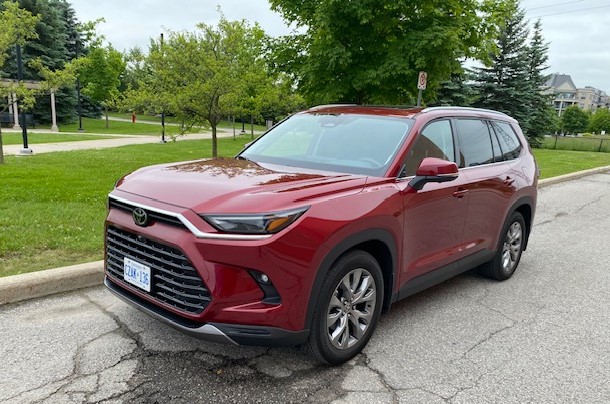
Tiny grille sporting the Toyota logo above the massive lower air intake is a bit odd. The rest of the Grand Highlander looks clean and uncluttered
History
The Grand Highlander is a new model that was released for the 2024 model year. It is a very large vehicle, 164 mm (6.5 inches) longer, and also wider and taller than the long-established Highlander.
In June 2024, Toyota temporarily halted production of the Grand Highlander due to concerns after a crash test that didn’t go well. It is unknown when the vehicle will reappear.
Vehicle tested
| Vehicle tested | 2024 Toyota Grand Highlander Limited |
| Body Style | Three-row crossover vehicle |
| Engine | 2.4L turbocharged four-cylinder engine (265 HP) |
| Transmission | Eight-speed automatic |
| MSRP Spread | $50,490 – $65,450 |
| Price as Tested | $57,945, Limited 2.4T, including $255 for Ruby Red Flare paint |
| NRCan combined fuel economy | 9L/100 km |
| Observed fuel economy | 11.7L/100 km |
Styling
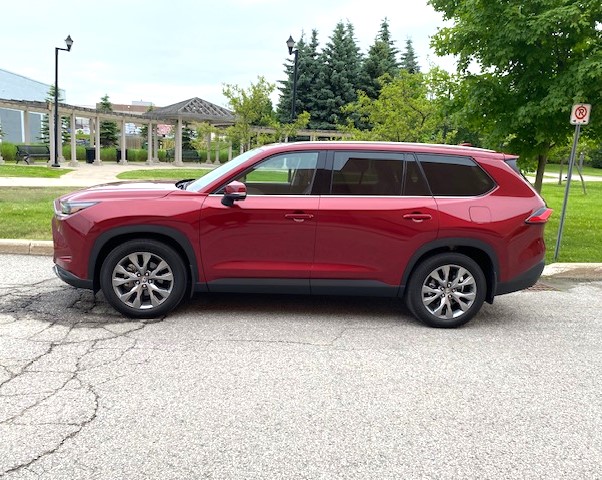
Visually restrained side profile
With a tiny grille and massive lower air intake, the front of the Grand Highlander is a bit awkward. The sides and rear are visually restrained and elegant.
Cabin design is traditional, attractive, and highly functional. There are a lot of hard plastic surfaces, including the dash top. The tops of the front doors are unpadded, which is surprising at this premium price point. The faux wood cabin accents lack any visual link to the real wood they are hoping to replicate. That said, the cabin trim generally looks good, and the leather upholstery on the APA’s high-end Limited model was very nice. Despite the variety of functions they command, the climate controls are quite straightforward, including those for the rear rows. The infotainment screen has a practical touch menu on its left side. The graphics aren’t a success and the navigation map is hard to read. The operation of the voice command for the phone is poor. There are a multitude of USB ports scattered around the cabin.
The Grand Highlander is massive, providing a vast cabin and good cargo space as well. The front seats are substantial and comfortable. The middle row captain chairs are supportive and passengers enjoy excellent legroom. The third-row seat is reasonably comfortable and spacious compared to the competition.
The centre console is very large but not so wide as to restrict the comfort of front passengers. The centre console houses numerous bins and cubbies that welcome a wide variety of contents. Oddments storage is augmented by commodious door bins.
he JBL-branded audio system does not have the sound quality expected in a vehicle of this price. Unlike many new vehicles, the audio system makes it easy to add and delete favourite radio stations.
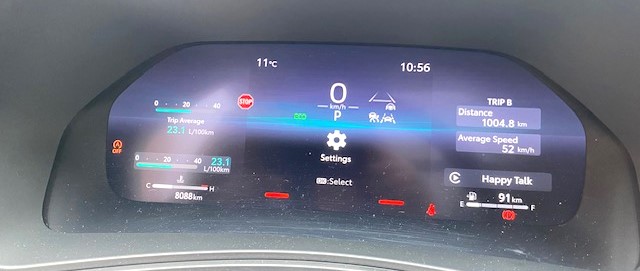
The comprehensive gauge package provides plenty of information but lacks visual panache
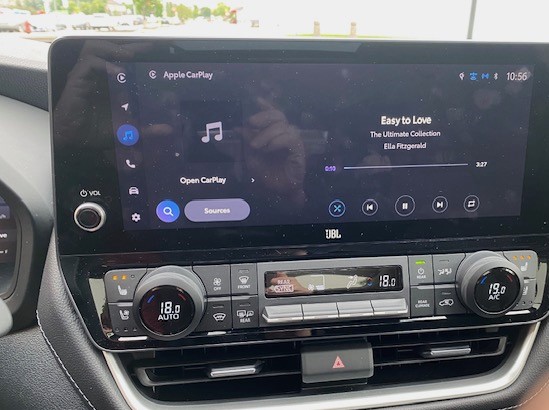
Large infoscreen sits atop a practical climate control panel
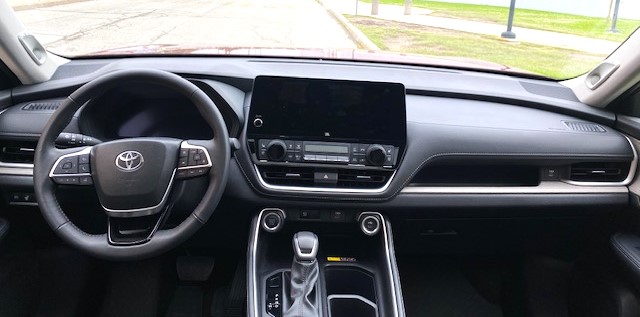
The dashboard is easy to live with. The centre console houses a variety of storage cubbies
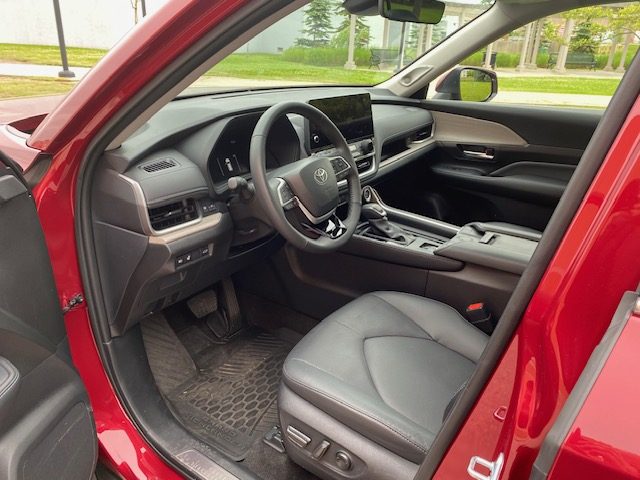
Comfortable front seats and plenty of room up front. The faux wood accents are not convincing
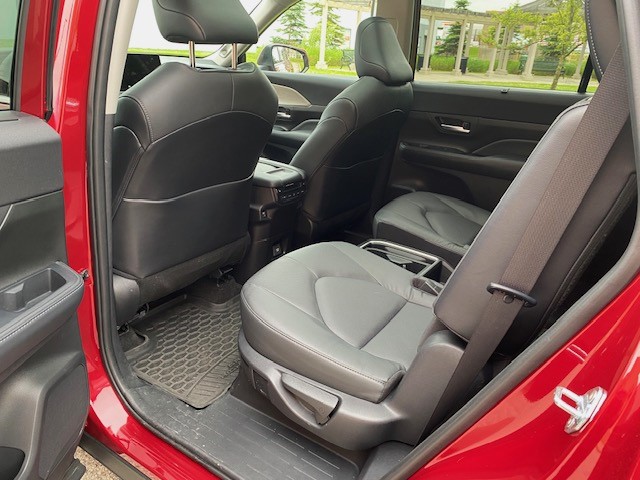
The centre captain chairs are supportive and legroom is substantial

The third-row seats low and flat but offer competitive space and comfort
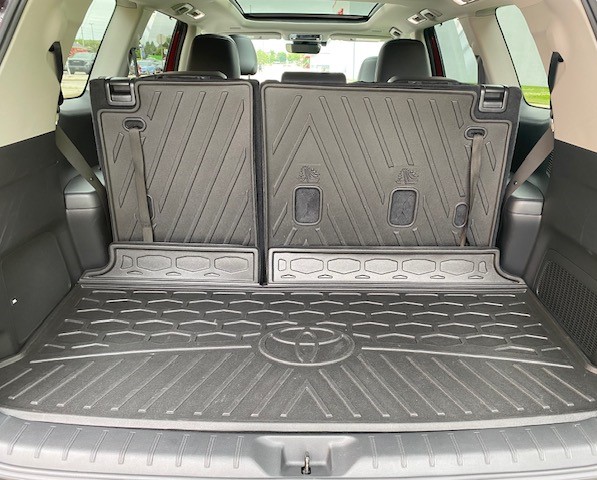
The XL size delivers greater cargo space than the Highlander.
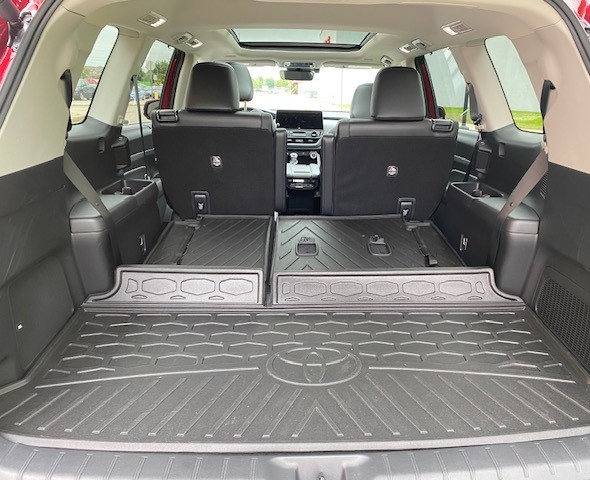
Expansive cargo space with the third-row seats folded
Performance
The 2.4L turbo four is strong and eager. It revs happily and puts its power down through a well-matched, conventional eight-speed automatic transmission. The powertrain feels athletic and enthusiastic. Unlike a smooth V6 that used to power this class of Toyota, the 2.4L turbo is quite loud when pushed, too loud for what is a luxury-class priced vehicle. Some torque steer is detectable under hard acceleration.
The Grand Highlander’s steering is light but precise, has good on-centre feel and directional stability on the highway. If there is a criticism, it is that the steering can be a bit slow in returning to centre after a turn. Brakes are nicely weighted, with good pedal feel and no lost pedal travel.
Handling is in no way sporty but is steady and the vehicle feels surprisingly manoeuvrable for a massive family bus. The Grand Highlander drives smaller than its supersized proportions would suggest.
The air conditioner coped easily with Toronto’s muggy summer weather..
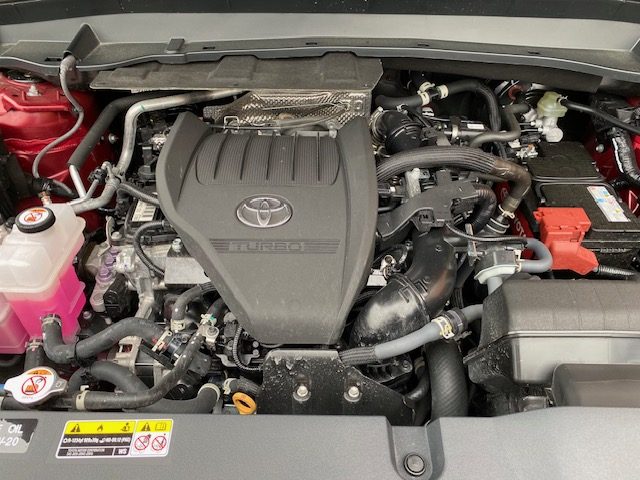
Turbo 2.4L four is strong, eager and flexible, but lacks refinement compared to a V6.
Pricing
With the XLE trim being the least-expensive model, there is really no base Grand Highlander, and even the most basic version is a premium-priced product. With heated, electrically-adjustable front seats, wireless cellphone charging and an auto-dimming rearview mirror, the XLE trim is nicely equipped. Stepping up to the Limited adds power-folding door mirrors, fog lights, a dual-panel sunroof, leather seating, ventilated front seats, a memory system, a JBL-branded audio system, front and rear parking sensors, rain-sense wipers, puddle lamps and a 360-degree camera, but it’s overpriced. Opting for the 2.5L hybrid powertrain adds $3300 to the price of the XLE and $3500 on the Limited.
Monthly payments for the Grand Highlander are as massive as the vehicle itself and interest rates are high. That said, comparing a four-year lease to a five-year finance contract reveals that leasing is very good value this year.
Conclusions
Though many would say there is no need for a vehicle larger than the original Highlander, Toyota has introduced a vehicle to compete directly with the likes of GM’s Acadia-Enclave-Traverse triplets and the very successful Hyundai Palisade and Kia Telluride. Though enormous, the vehicle does offer abundant space for passengers and for cargo as well. Like other Toyota SUVs, the Grand Highlander is likely to offer inadequate factory theft protection and also carry a high risk of theft for export. The APA recommends a Tag Tracking, available for under $500 in the aftermarket. The Tag system does not interfere with the vehicle’s factory wiring, and its presence will dissuade some thieves from stealing the vehicle. Tag uses dedicated “trackers” to find stolen vehicles headed for containers or “cooling off” on remote lots, and enjoys good cooperation from law enforcement in Southern Ontario and Quebec.
The hybrid powertrain is the most unique feature of the Grand Highlander. Although it’s virtually unavailable, if you can actually find one, the hybrid is the way to go; fuel savings are substantial with payback easily attainable in five or six years, and the promise of even stronger resale value than the gasoline version. Putting aside the fact that the Grand Highlander is “Too large for real life,” it is a pleasant vehicle that despite its size, is surprisingly wieldy to drive and easy to live with.
The Grand Highlander may offer a window into Toyota’s future product plans. With the current RAV4 at the point where it is due for replacement, and the Highlander getting older, the Grand Highlander may become Toyota’s standard three-row vehicle, positioned above a larger next-generation RAV4, rendering the current Highlander superfluous.
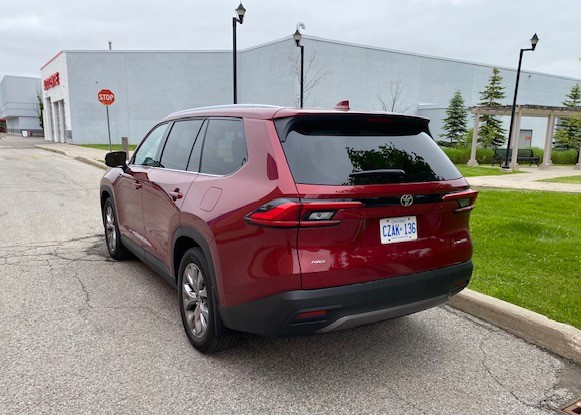
The rear of the Grand Highlander is visually interesting without an excess of lines or applied ornamentation
